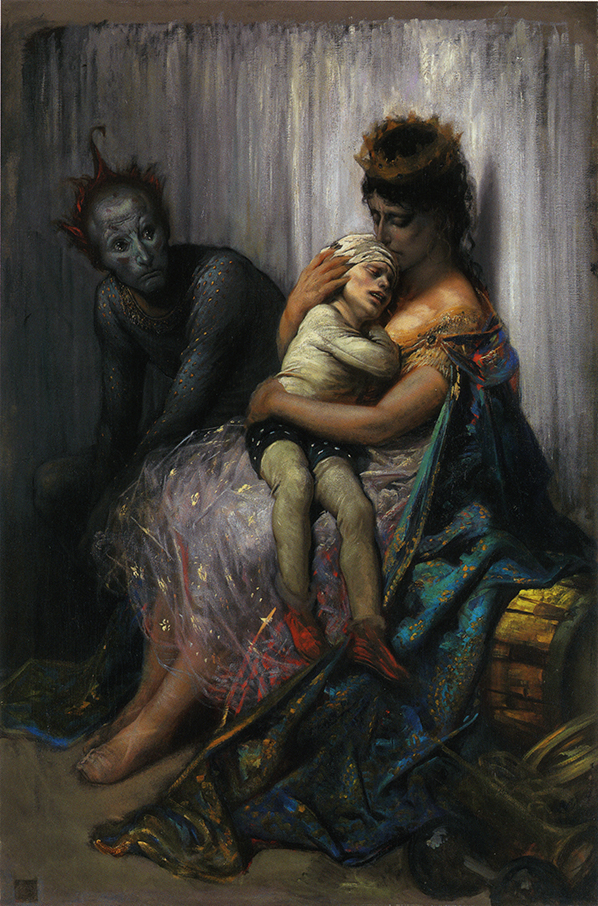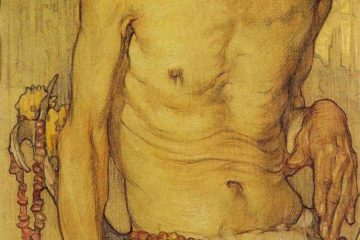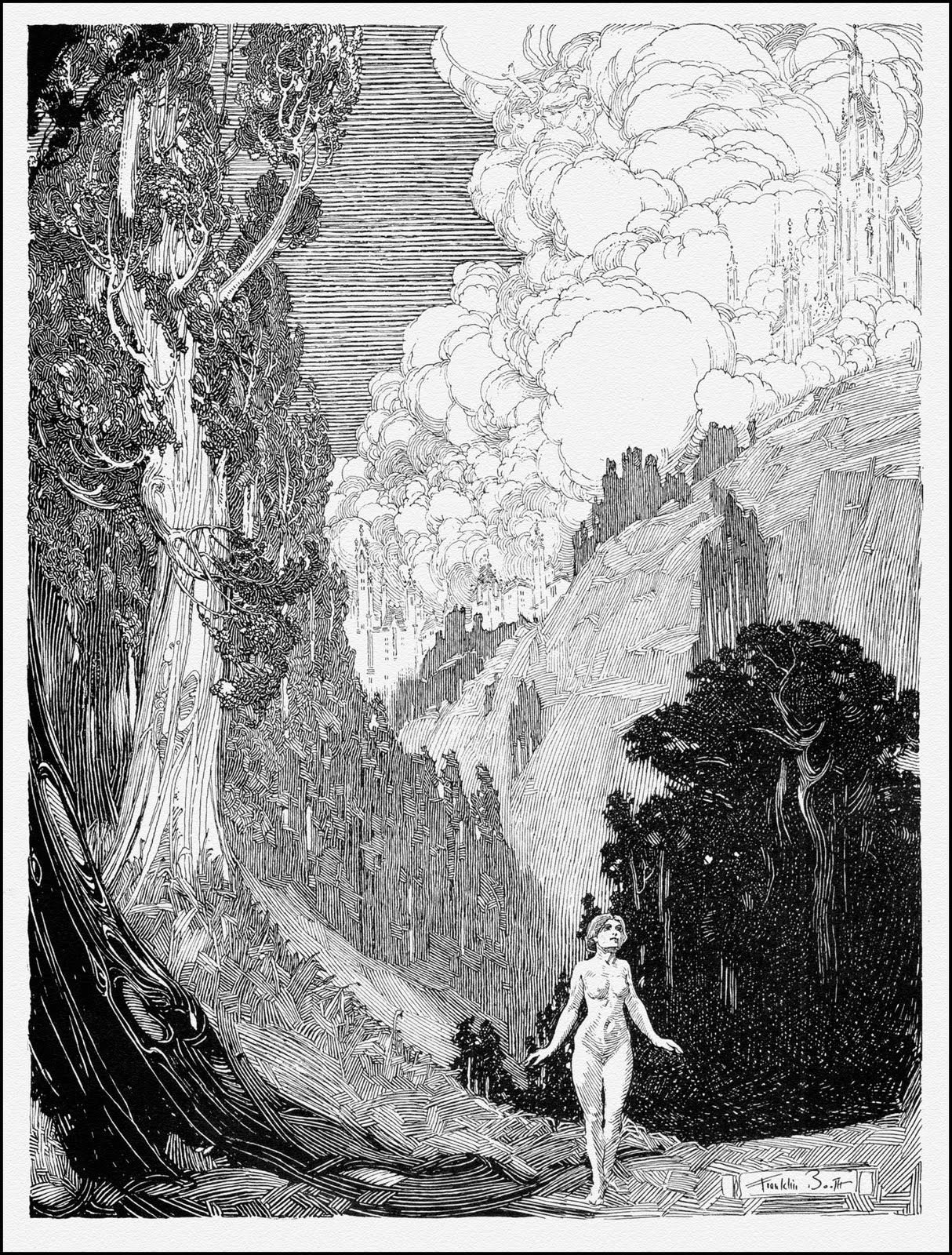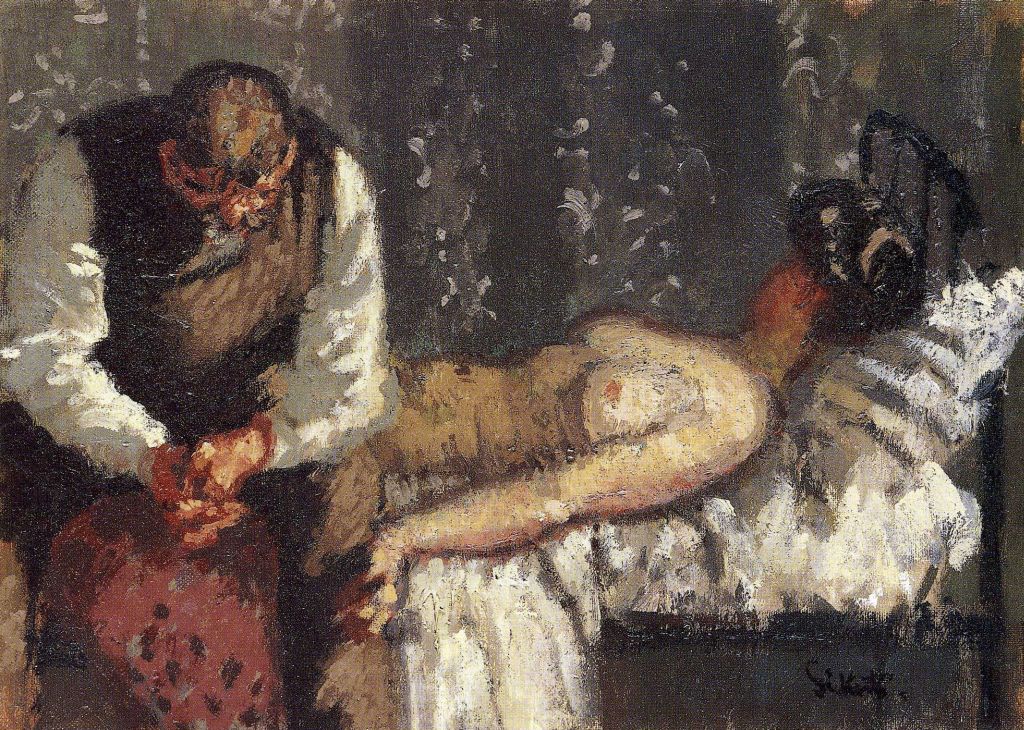It is safe to say that I love art, and in the internet age it is easy enough to find so many pieces to fall in love with. There have been so many artists throughout history that there is something for everyone, and in my case probably too much. I am also lucky enough to live within driving distance of several world-class art museums, particularly the Denver Art Museum.
A few years ago, on somewhat of a lark, I decided to drive down to the DAM (I do love saying that) to see what new pieces might be there. Their collection has a few personal favorites of mine too, from the Cole to the N.C. Wyeth through to the William Jacob Hays, and I always hope to find something new. It’s true of all things I do, really, I want something to take my breath away.
Coming around the corner in the museum, seeing this fascinating painting, did precisely that.
It is not a small painting, which is certainly part of it. Doré’s La Famille du Saltimbanque: L’Enfant Blessé is over six feet tall, and seeing it made me literally stop in my tracks. Those are the moments I live for, the very reason why it is important to see art in a museum or gallery. That image above is decently large for the web, it even probably challenged the email browsers of my few subscribers.
But in the museum, the truth of the piece is revealed more thoroughly. These characters are life size, and it immediately makes a far stronger impact than any web or book image ever could.
Standing there, probably in the way of all of the other patrons, I forgot that it was a painting. Being an artist for a couple of decades now, I certainly admired the composition, use of color and light, and the way Doré used brushstrokes to show emotion.
But most of all, I stood there looking at every bit of this painting, and felt the helplessness of being a parent watching someone lose their child.
Doré offered a world not filled with the animations of the circus, or even the extreme dark of paintings like Goya’s (next week, but you can see it below). He painted a world where gray rules the moment. The environment is dark around the woman and the child, the man nearly lost in the midtone grays and blues. The strongest light is saved only for the lost child, the rest falls into misery and pain.
Ultimately Doré has made his point quite clearly. By highlighting the child, and dampening the rest, he told the viewer exactly what happened and who to care about. The parents, despite their sadness, are the real cause of the child’s death. It is a perfect example of the mantra, “show don’t tell.” In this case, Doré showed us exactly what misery really is.
See it larger on the Denver Art Museum page
See previous editions and subscribe to new articles here.
References
The Family of Street Acrobats: the Injured Child (La Famille du Saltimbanque: L’Enfant Blessé)
Gustave Doré
1873, Oil on canvas
height: 76 3/4 in, 194.9450 cm; width: 51 1/2 in, 130.8100 cm
https://denverartmuseum.org/object/2012.4



